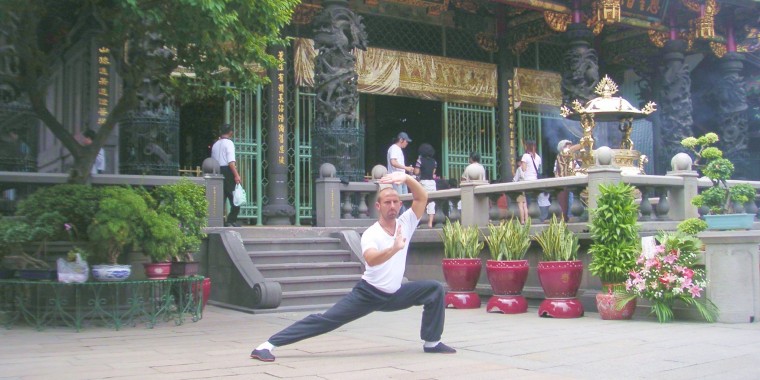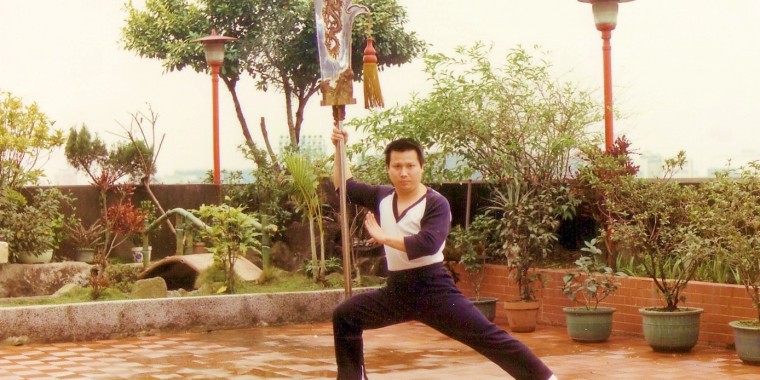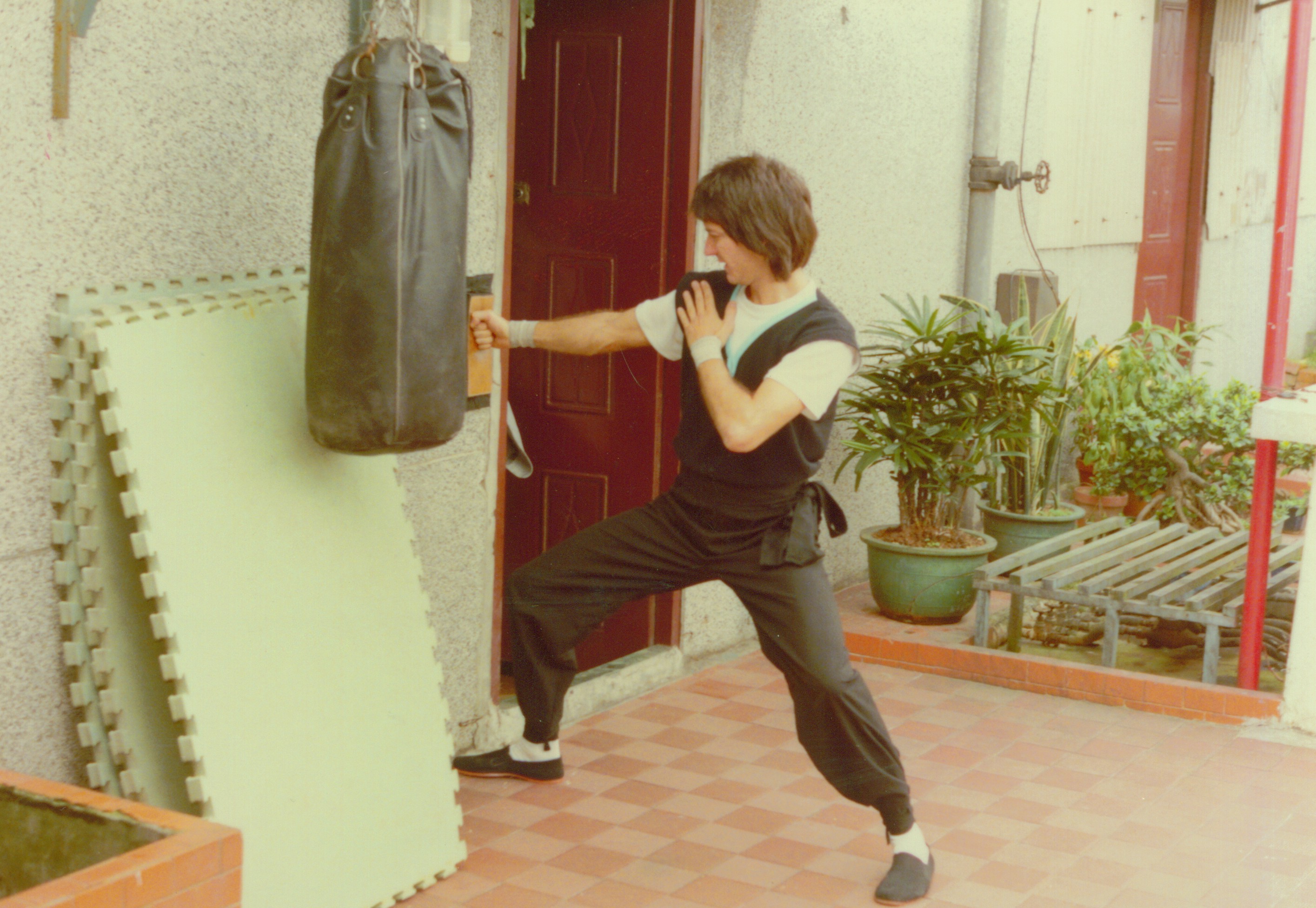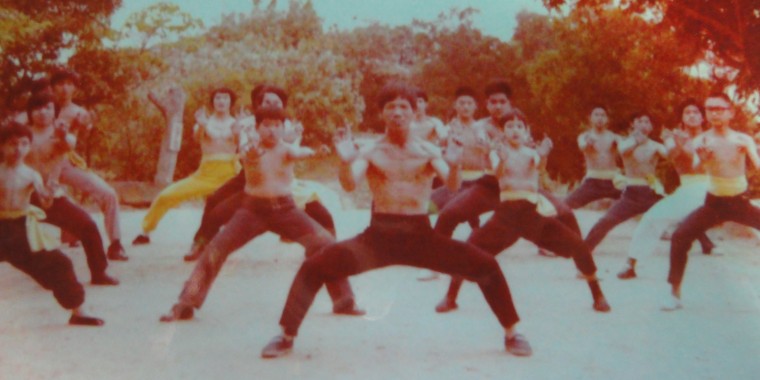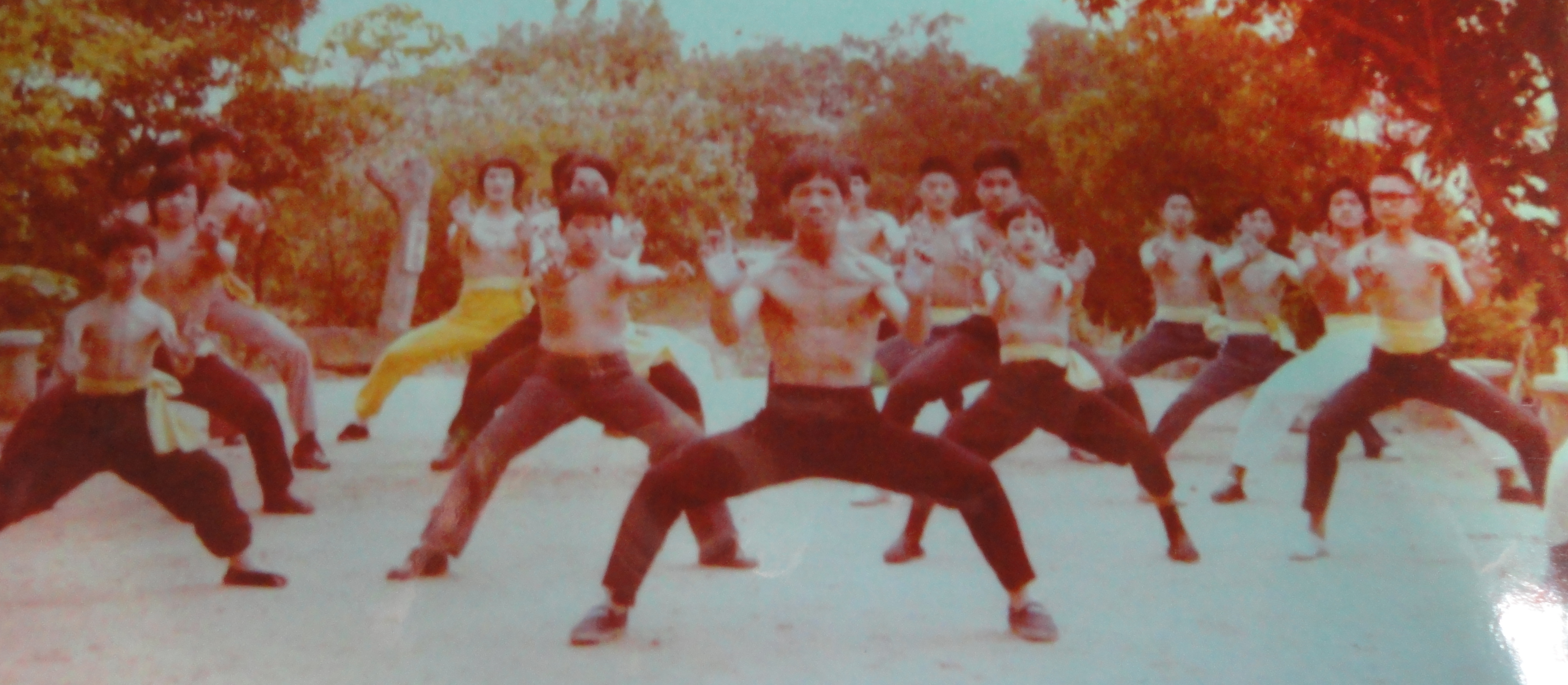ANCIENT MARTIAL ARTS TRAINING ARRIVES IN PLANO
A Shaolin Kung Fu Teacher or Sifu as they are called in Chinese has built a martial arts school in the style which has not been commonly seen in centuries. The Shaolin Wu-Yi Institute located in Plano is a Traditional school of Kung Fu (the Chinese form of karate) with a peaceful, serene and enlightening atmosphere in which one would expect to find a class of kung fu monks perfecting their ancient martial arts skills.
The Shaolin Wu-Yi Institute (wu-yi means martial arts in Chinese) exploded into the Plano community with a spectacular performance by its martial arts demonstration team at the Plano Balloon Festival in 2006. Anyone lucky enough to have seen the demonstration of exotic weapons, gravity defying kicks, and fascinating martial arts routines designed to imitate animals such as the Leopard, Snake, Tiger, Crane and Dragon will surely agree that these unique skills are rarely seen outside China.
The Shaolin Wu-Yi Institute is the result over twenty five years of planning and research by the founder Sifu Travis Alschbach. Sifu Alschbach after having spent more than two decades studying Shaolin Kung Fu as well as visiting many ancient temples in China took all his accumulated knowledge and experience and built a Kung Fu School to resemble the training environment achieved over 1,500 years ago at the Shaolin Temple, considered the birthplace of Chinese Karate known as Kung Fu.
When entering the Shaolin Wu-Yi Institute you will feel as if you have traveled back in time to the ancient Kung Fu Temples of Imperial China. In the dimly lit entry way to the Shaolin Wu-Yi Institute you will be calmed by the relaxing scent of burning incense and interested by the display of six pictures depicting the postures of the two styles of martial arts taught at the Institute which are the Northern Long Fist and Shaolin Five Animals Styles of Kung Fu. The next thing you will see is a large and imposing stone statue of a fierce Chinese warrior standing like a guardian at the front of the entryway representing the martial arts tradition.
Once you gain entry into the main training hall you will see an enormous training area with a vast collection of Traditional Kung Fu Weapons and ancient training tools. Dividing the practice area in half is the enormous and beautiful brass gong used to call the students to class and focus the mind for meditation. The walls are covered with beautiful painted wall scrolls as well as an impressive display of photos spanning nearly 150 years of the Institutes kung fu lineage. Equally unique and impressive is the style of martial arts being practiced at the Shaolin Wu-Yi Institute. The Shaolin Five Animals System is a truly rare form of martial arts rarely found outside China.
Individuals interested in learning the ancient art of Shaolin Kung Fu will have a hard time finding a martial arts school which provides such a powerful combination of Traditional Kung Fu training in such a serene and rejuvenating environment without traveling back in time to the kung fu temples of ancient China.
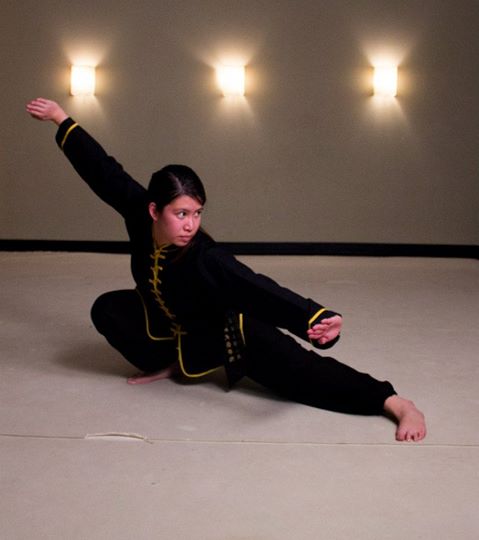
Ultimate KUNG FU Practice
The only SECRET of the Ancient Masters
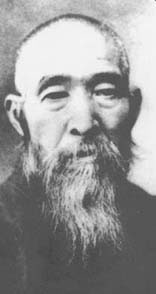 The famous last words of the legendary Sun Lu Tang sum up the only true “Secret” of Chinese kung fu. The story goes that as Master Sun lay on his death bed one of his students asked him the secret of kung fu, at which time Sun wrote a single Chinese character on his hand and then passed away, the word he wrote was “practice”. While the story may be fictitious the advice is true. It is only with the commitment of much time and energy that anything of value will be accomplished.
The famous last words of the legendary Sun Lu Tang sum up the only true “Secret” of Chinese kung fu. The story goes that as Master Sun lay on his death bed one of his students asked him the secret of kung fu, at which time Sun wrote a single Chinese character on his hand and then passed away, the word he wrote was “practice”. While the story may be fictitious the advice is true. It is only with the commitment of much time and energy that anything of value will be accomplished.
There is a saying in Chinese martial arts that outlines the three essential skills needed to achieve victory in battle. They are first Speed then Power and last Technique. From this you can see that speed is the most important followed by power and last superior technique. Many students may mistakenly place the emphasis on technique while lacking the speed and power to back up their skill. So it is essential to balance your training between these three areas in order to develop to the best of your ability.
A good training program will include various drills for hand speed, kicking speed and reaction time including blocking and grabbing speed. One basic but effective striking drill is:
- Hand Striking “Quan Fa” – This training should be done in three minute intervals with the first interval done at a moderate pace with light power, the next interval is done at a faster speed with more active footwork and defensive hand work (blocking / trapping), the third interval is done for power with very heavy striking. This training can be done with the sandbag, heavy bag, wooden dummy or with a partner holding the pads /mitts / shields.
You must also commit to a diligent force training program in order to have sufficient power behind your techniques. The heavy 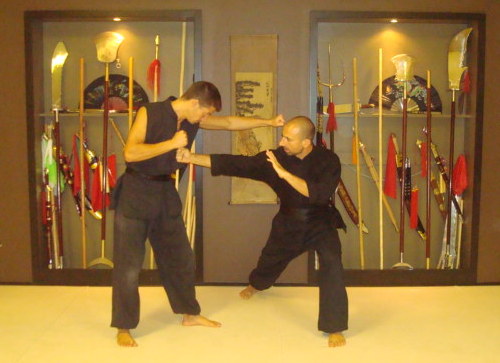 bag is a very effective tool in the development of powerful strikes and one of the most basic force training drills is the power punch.
bag is a very effective tool in the development of powerful strikes and one of the most basic force training drills is the power punch.
- Striking Power – stand facing the heavy bag and continually strike for one minute while putting your whole body into the strike. The same type of training can be performed on the sandbag or with a candle in an attempt to extinguish the flame or influence the way the flame flickers. Popular striking methods include the palm strike (iron palm, cutting palm, willow leaf palm) and punches (vertical punch, flat punch, drill punch)
In improving your skill in technique there is more than just form or “taolu” practice (commonly known as kata in Japanese). Some other training categories that refine your martial skill include: fighting forms, joint locks, Throws and Takedowns, Fast Wrestling, bridge hands, sparring or fatigue and stress drills.
- Fighting forms “Dui Da” – prearranged set of techniques done with a partner to work on speed, application and sense of distance, fighting forms may include kicking, hand strikes, locking, and throwing techniques.
- QinNa “Seize and Control” – Joint Locking, controlling and anti-grappling techniques that may be practiced in the sparring situation, as well as on the ground. QinNa techniques were designed to use against takedowns and grappling.
- Shuai Chiao “Chinese Wrestling” – sweeping, throwing and takedown methods, shuai chiao was designed to counter striking.
- Kuai Chiao “Fast Wrestling”– kuai chiao combines the kicking, striking, throwing and locking techniques to achieve very fast and effective takedowns and controlling methods. Kuai Chiao is trained by the Chinese police and military for its efficiency and effectiveness.
- Bridge Hands “Qiao Shou”– two person training patterns to build sensitivity, sticking and following ability of the hands and arms as well as conditioning. Similar training methods include Pan Shou “coiling hands”, Dui Lian “matching hands” and Tui Shou “pushing hands”.
- Sparring “San Da” – Controlled fighting with protective gear so that you may experience the feeling of a resisting opponent may include throwing and locking techniques in addition to kicking and striking.
- Forms “Taolu”– traditional forms may be practiced with wrist and ankle weights for added difficulty or you may execute the techniques on a target such as the heavy bag. You may also go through the form and apply the techniques on an opponent / training partner to train the usage and a sense of enemy.
- Fatigue and Stress drills – training done under abnormal conditions such as low light or after a fatigue drill such as sprints or push ups
If you continually push yourself (self-mastery) and adjust your training goals as you progress there is no limit to your growth and skill. Always strive for a balanced training program that includes speed, power and technique. There are no shortcuts or overnight experts, hard work and time are the key to success. The journey of Chinese martial arts has been traveled by countless students and Masters for millennia and will continue to offer the benefits of Health, Fighting ability and Mental Toughness to those who undergo the training in the traditional manner.
“Repetition is the Mother of all Skill”
The 3 Keys to Real Kung Fu Training
The 3 Keys to Real Kung Fu Training
Evaluating and Fixing Your Martial Arts Training Routine
Chinese Kung Fu is an engaging, challenging and demanding fighting style first documented over two thousand years ago. In order to gain proficiency in Chinese kung fu one must develop increased SPEED, POWER, TECHNIQUE (known as the three essential skills) as well as flexibility, balance, agility and stamina in addition to the mental characteristics of patience, perseverance and a strong will.
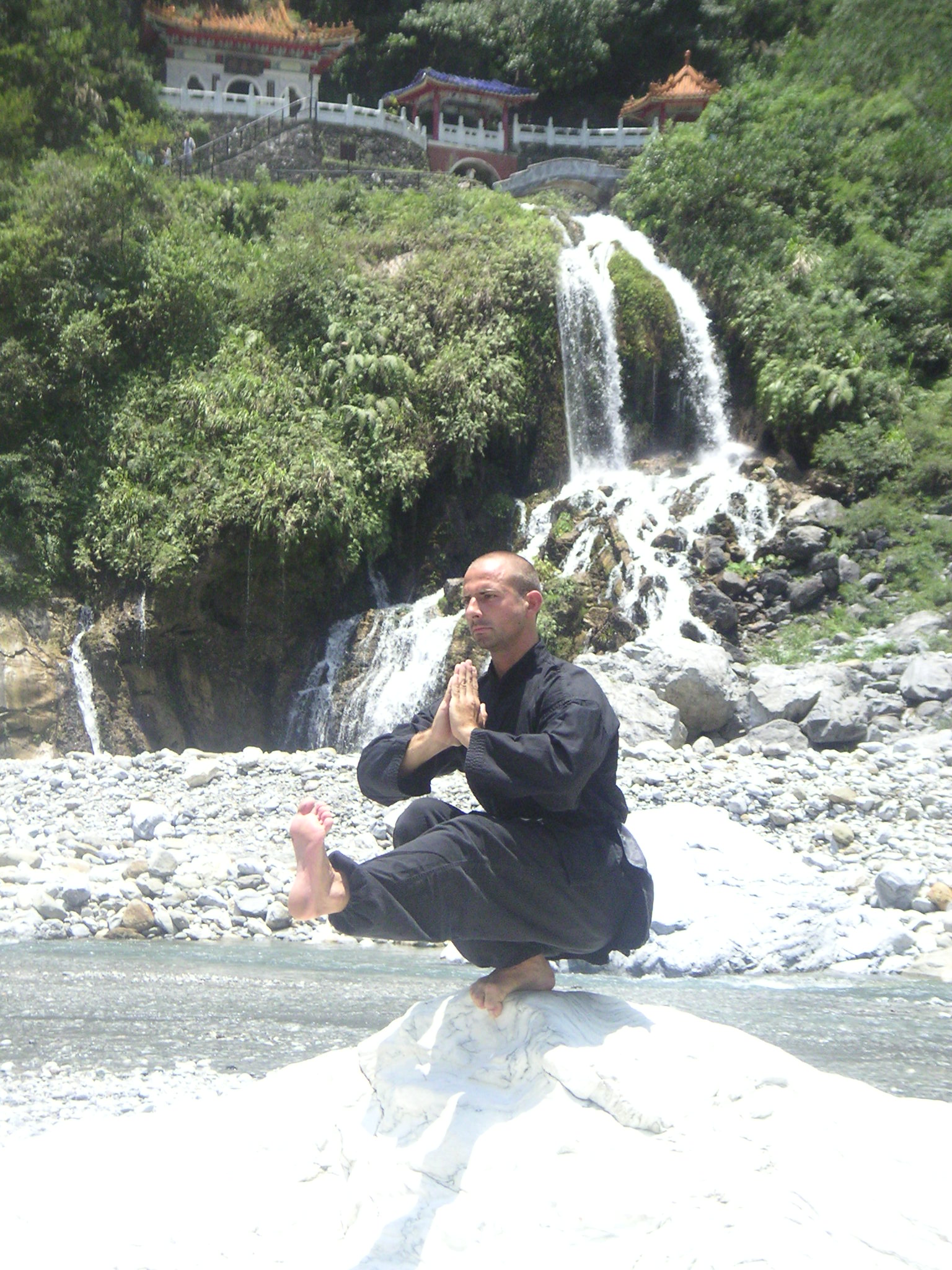 In the past kung fu was primarily used for fighting and defensive purposes but in modern times the practical application and usage can be diminished while the health and fitness side is emphasized. In order to increase the richness and benefits of your kung fu training you should try to include all the essential training aspects and keep in mind that every movement is rooted in an effective offensive or defensive fighting technique. You can achieve a balanced training routine by designing your practice to include skill development (technique), conditioning (speed and power) and internal training.
In the past kung fu was primarily used for fighting and defensive purposes but in modern times the practical application and usage can be diminished while the health and fitness side is emphasized. In order to increase the richness and benefits of your kung fu training you should try to include all the essential training aspects and keep in mind that every movement is rooted in an effective offensive or defensive fighting technique. You can achieve a balanced training routine by designing your practice to include skill development (technique), conditioning (speed and power) and internal training.
Skill development includes all the unique training methods for the particular kung fu style you are practicing. For example: empty hand and weapon routines, qinNa “joint-lock”, shaui chiao “takedowns”, fighting forms, partner practice such as “qiao shou” bridge hands, “tui shou” push hands, “pan shou” coiling hands and the like. Also included in the skill development part of your training are the fundamentals such as stance training, “tui fa” kicking techniques and “shou fa” hand striking methods which may be practiced in the air, on the heavy bag or with a partner.
The second aspect and traditionally the most important yet often neglected part of the training routine is conditioning. This includes strength training, flexibility, speed development and stamina building. Strength and power training can be achieved through targeted drills such as holding weights in the hands while punching and striking, performing isometric and dynamic strength drills with a partner or with the addition of weight training.
Flexibility is equally important in being able to properly execute techniques as well as in avoiding injuries. Flexibility can be increased through a dedicated effective stretching regimen or with the addition of Yoga practice. Flexibility and strength development must be balanced. Flexibility can be easily measured and if sufficient improvement is not achieved then the training program should be adjusted.
The third crucial aspect of training is speed development. Speed can be increased through timed and measured basic striking repetition
drills, partner reaction training and candle punching. The goal of this type of training is to increase reaction time and improve the speed of offensive and defensive movements.
Finally endurance and stamina are critical. Excellent ways of increasing your stamina are heavy bag work, sparring, and shuai chiao “Chinese wrestling” with a resisting partner. You may also further improve your kung fu training program with the addition of running or swimming.
Internal training is often considered the crown jewel of Chinese martial arts for its profound depth and universal benefits. Tai Chi Chuan (taijiquan ) is the most widely practiced martial art in the world due to its positive effect on health and wellbeing. Internal training includes seated meditation and breathing techniques, standing Chi Kung (qigong) as well as moving Chi Kung forms such as Tai Chi. Chi Kung has been shown to reduce stress, improve the immune system, reduce feelings of depression and increase mental clarity and focus.
A great way to improve the quality of your training is to record the contents of your practice routine and make adjustments for any deficiencies.
The Unknown History of Taiwanese Five Animals Kung Fu
The Unknown History of Taiwanese Five Animals Kung Fu
Southern Shaolin Five Animals / Hung Ga Quan
by Travis Alschbach
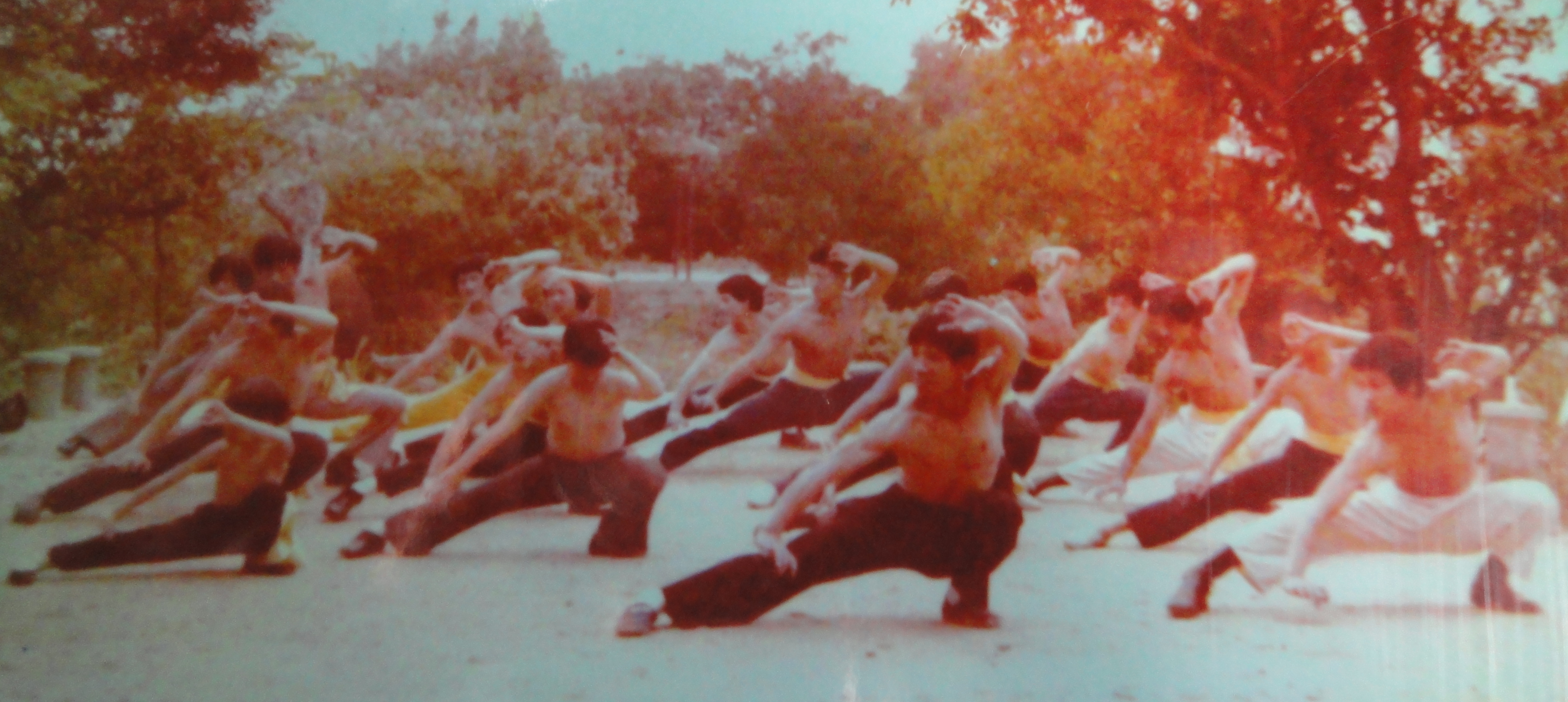
Master Chang Ke Chi and students practicing Gong Zi Fu Hu Quan “Tiger Taming Fist” 1970’s Taiwan, R.O.C.
The Five Animals martial arts are synonymous with the Southern Shaolin Temple. The southern temple was lost during the Qing dynasty but the martial arts that originated there have spread around the world. There are countless derivative styles that have evolved and claim their origin from the southern Shaolin temple. Some of the main schools include Hung Ga, Li Ga, Lau Ga, Mok Ga and Choy Ga. Some of the derivative styles include Bai He (white crane), Yong Chun (wing chun), Choy Mok, Hung Fut, Cai Li Fo (choy li fut), Dragon style, Wu Zu Quan and Bak Mei.
The most widespread and easily recognizable of the southern Shaolin styles is the Hung Fist which originated in Fujian and Guangdong provinces during the Qing dynasty (1644-1911). The martial historian Tang Hao wrote that after examination the Five Animals of Shaolin are no different than the Hung Fist from Canton. Since its development in the Qing dynasty many distinct branches have become popularized. Some of the various Hung Ga schools are:
- Hung Ga Tiger and Crane school of Lam Sai Wing including the Taming the Tiger, Tiger Crane, Five Animals & Five Elements and Iron Wire forms, descended from Luk Ah Choi and mainly developed by Lam Sai Wing
- Zhanjiang Hung Ga also called called Ha Say Fu Hung Ga includes an individual sequence for each of the five animals as well as many unique weapon sets
- Five Pattern Hung Ga with an individual form for each of the five animals, attributed to Ng Mui and Miu Hin
- Southern Shaolin Hung Ga of Wong Kiew Kit which contains a unique Tiger Crane pattern as well as Tiger & Dragon, Black Tiger Claw and others, descended from Jiang nan
- Taiwanese Five Animals commonly called Hong Quan “Hung Fist” in Taiwan. This style includes an individual form for each of the animals as well as 18 Lohan Palms, Taming the Tiger, Southern Eagle, Tiger Crane and Snake & Cat , some of the more exotic weapons of Taiwanese Hung Ga include the folded fan, long handled hook and umbrella
The Five Animals Hung Ga was brought to Taiwan from Guangdong province around 1946 by Lin Jia Kun. arrived . Lin was a soldier in the Nationalist Army and came to Taiwan with the retreating army as the communists overtook mainland China. While in Taiwan Lin Jia Kun taught Chang Ke Chi who went on to become the predominant teacher of the Five Animals Hung Fist in Taiwan. Chang worked both as a teacher and in the martial arts film industry in Taiwan and throughout Asia beginning in the 1960’s.
Due to the large number of practitioners and growth of the style in Taiwan Lin Jia Kun’s Five Animals style is also known as Taiwanese Hung Ga although it originated in Guangdong and Fujian province. The Hung school with its many unique branches remains the most popular and widespread of the southern styles and is the closest representation of traditional southern Shaolin. The style has now spread all over the world with schools throughout Asia including Korea, Japan, Australia, South Africa, Europe, Canada and the United States.



